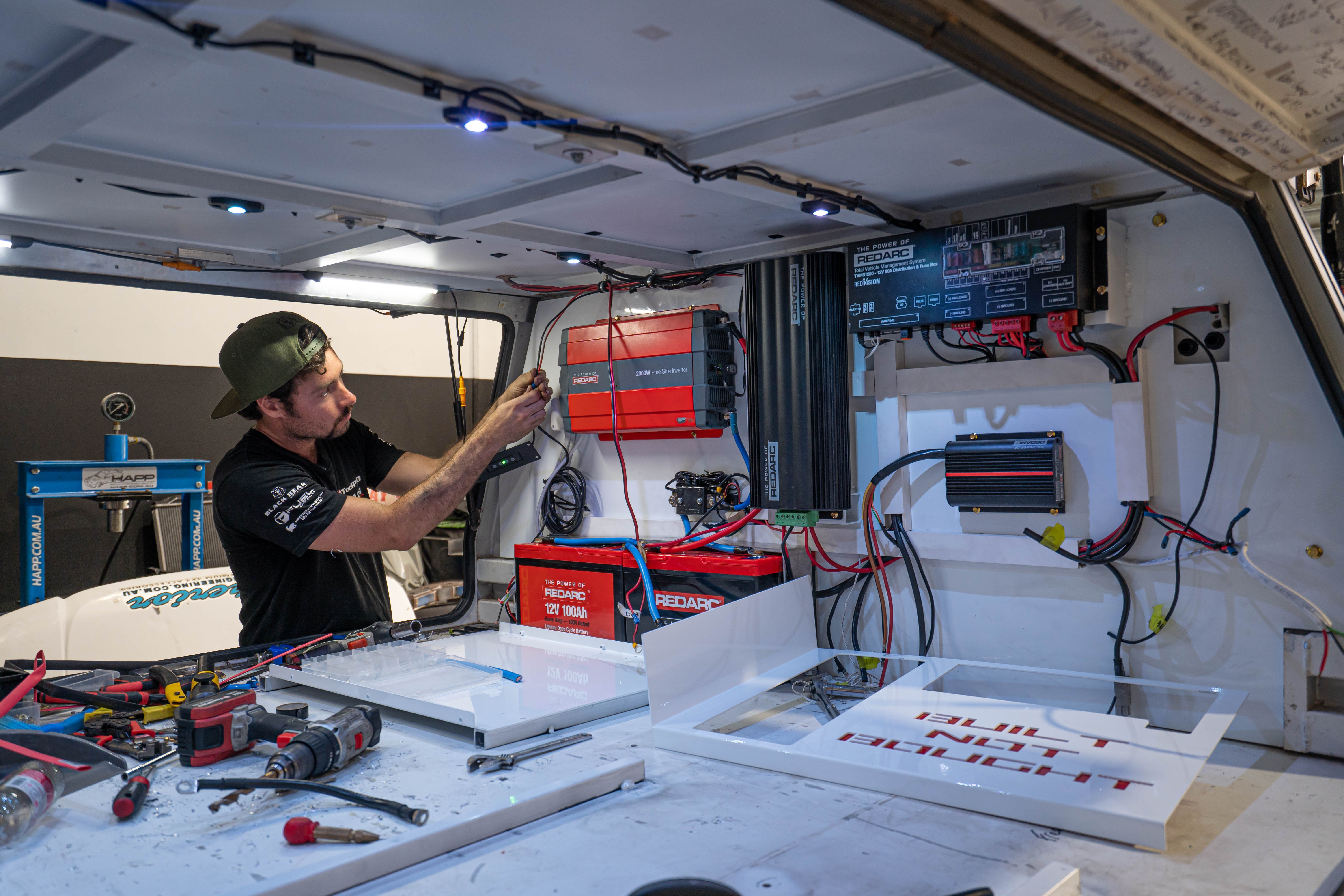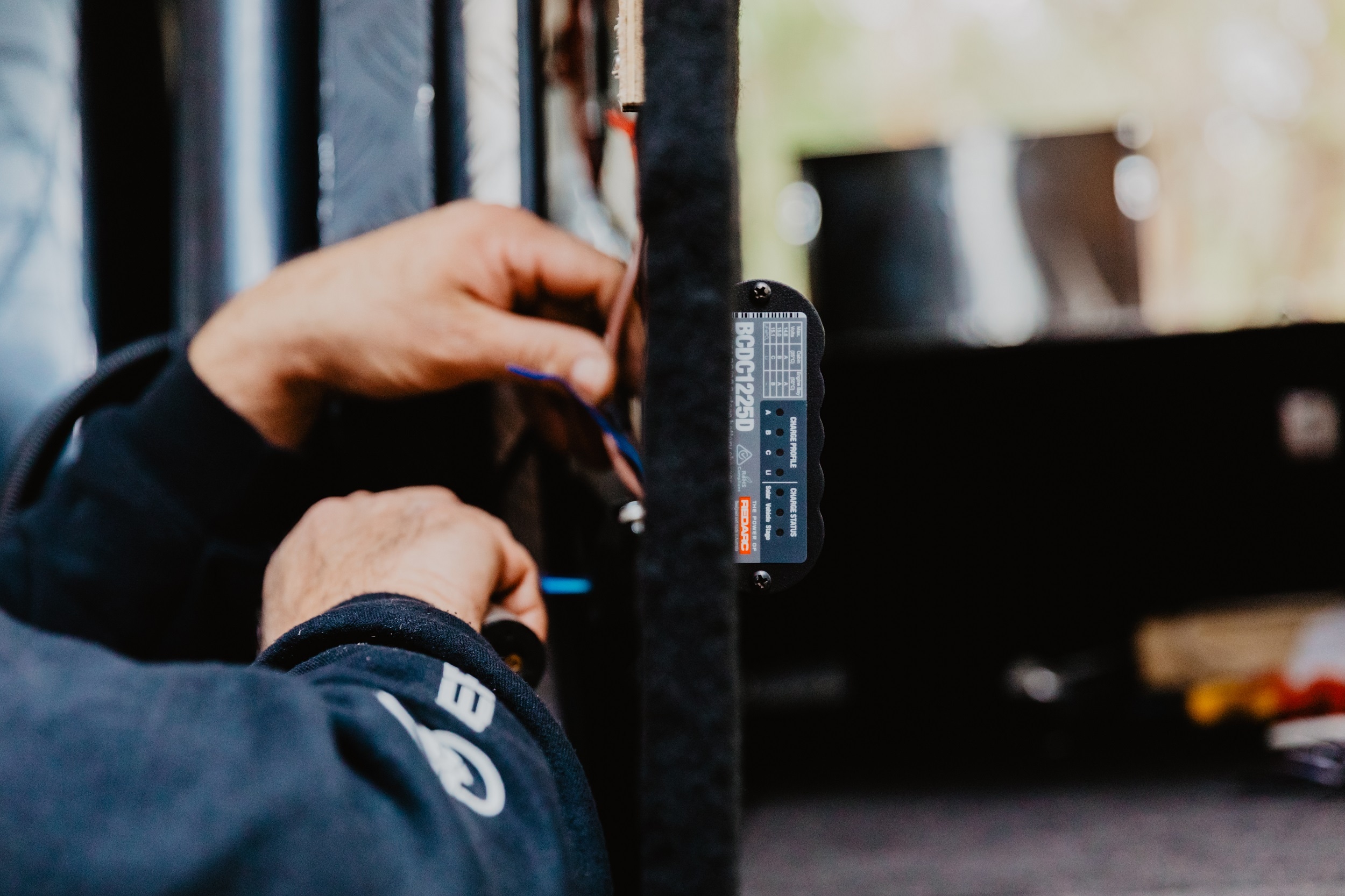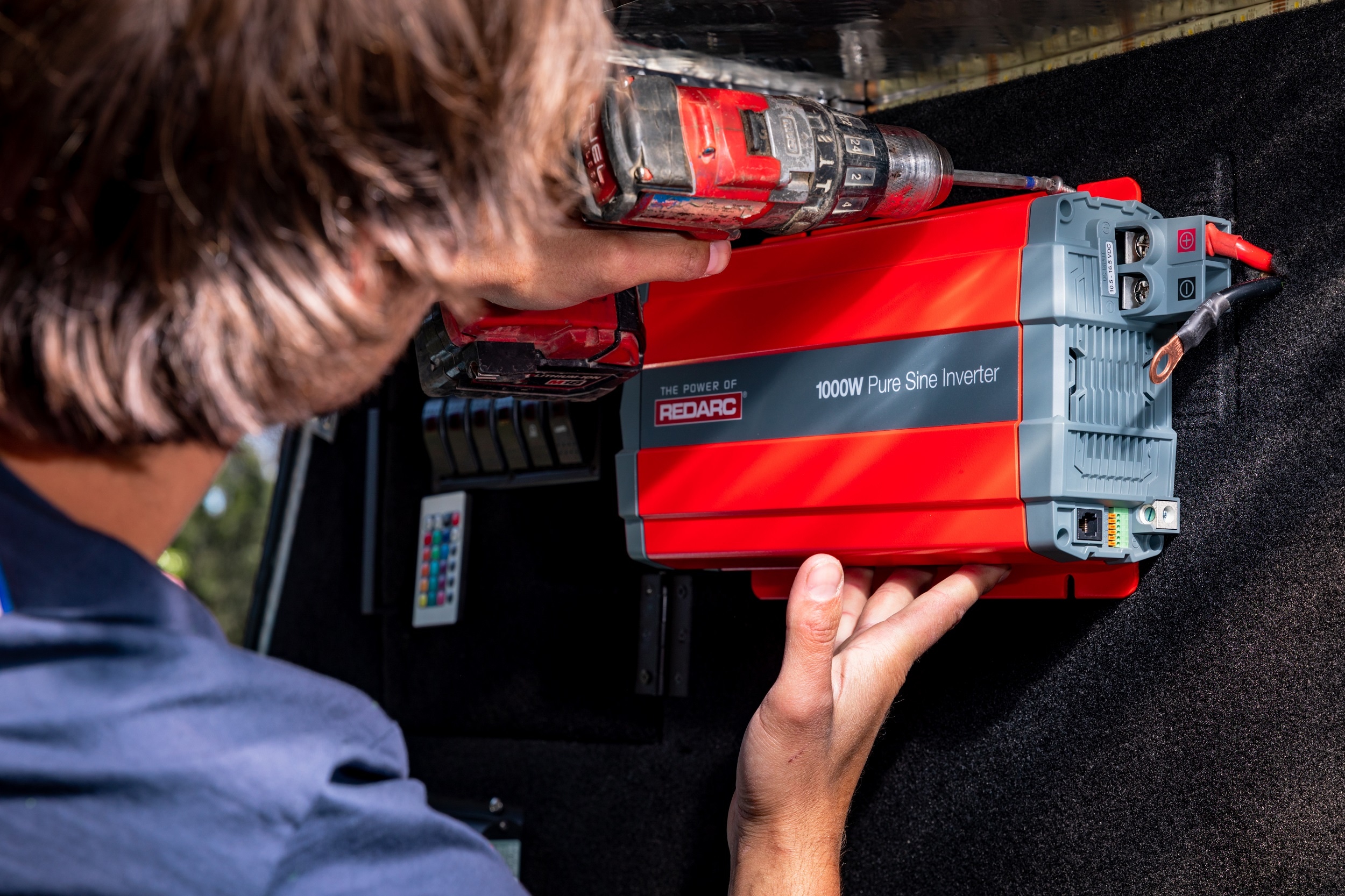Andrew and Peta Murray from Top Wire Traveller travel all over Australia in their truck camper, and have a couple of dual battery systems in their rig. Here are their 10 tips on how you can maximise your power management system.
Your power management system could be as simple as a portable battery with a fridge plugged into it. Or it could be a full-blown second battery system, powering multiple devices like inverters, a fridge, a freezer and so on.
Whatever your system, if you spend a little more upfront you'll have a power management system that will work away quietly in the background day after day.
We've put together 10 quick tips to ensure your vehicle's power management system runs at maximum efficiency. Let's get into it!
1. Cable size
The right cable size is critical. Too small and you'll see some pretty severe voltage drops from one end of the cable to the other. Use a voltage drop calculator to figure out what cable sizes you need.
If in doubt about what cable size to use, always go with the bigger cable. There's nothing worse than wiring a system, only to discover the cables are too small!
Yes, it will cost a bit more for the larger cables and terminals. However, you’ll have a system that does the job.
2. Use quality connectors
If there's an ideal example of poor connectors, you only have to look at just about every car fridge on the market. They invariably have either a cigarette lighter connection or a Merit plug.
Both of these are virtually useless.
The connection is loose and often the plug falls out of the socket. How many times have you heard people complaining about how their fridge isn't working properly? 99 times out of 100, it's the plug and socket connection causing a large voltage drop.


3. Keep your terminals clean
This applies to all terminals, not just your battery terminals. After a while, terminals can become corroded, especially if you spend a lot of time in rainy or humid climates.
Every six months or so, have a quick look over all the terminals in your system… especially the ones hidden in sealed boxes. One example is the black box on the back of your portable solar panel. If moisture gets in, the terminals can corrode and create a bad connection.
If you do find a corroded terminal, clean it up then coat lightly in Vaseline. To clean the terminal, you can use a teaspoon of sodium bicarbonate (or bi-Carb Soda) mixed into a small jar of warm water.
Dunk the terminal in the jar or pour the bi-carb and water mixture over the terminal. This is a simple way to get the gunk off any dodgy terminals.
4. Use a quality battery charger
Batteries aren't cheap. So it makes sense to keep them at peak condition. And the best way to do this is with a quality battery charger.
REDARC have a range of battery chargers including in-vehicle chargers, battery management systems and even AC battery chargers for when your vehicle's parked up at home.


And the one thing these units have in common? They all optimise the charging cycle to ensure your battery's in peak condition.
Yes, you can buy cheap in-vehicle chargers. But they usually don't last long and you never quite know how well they are looking after your battery.
This article has some great tips on selecting the right battery charger for your application.
5. Make sure your battery has enough capacity
You can have the best battery management system, properly sized cables and all the right gear. But if the battery is too small for the loads you'll be sucking out of it… well, that's frustrating!
While this is a solar calculator, it does give you a good idea of what size battery you need. Then once you figure out the battery size, use this calculator to figure out the most suitable charger.
It's always better to oversize your battery. Why? Because you'll no doubt end up adding a whole stack of devices you hadn't even thought about once your system’s installed.
6. Maintain your solar panels
Solar panels are tough. They'll withstand some pretty severe punishment. But they do need to be cleaned.
We covered off simple solar panel maintenance here. Suffice to say, wipe them down occasionally and remove any tree sap or bird droppings. This ensures they’ll continue to supply your power management system with optimal charge.
7. Give electronic equipment room to breathe
The biggest enemy of electronic equipment is heat. If you install say a DC-DC charger under the bonnet, it will still work reliably for years. But it will work more efficiently in a cooler environment.
Same goes for any electronic equipment. Say you install your brand new BMS in behind the front seat, on the floor of your single cab ute. Then you pile coats and jumpers, and maybe even a towel on top of it.
Yes, it will still work, but it will work more efficiently if you leave some space around it.
Have a think about where the best place is to install any electronic devices before you bolt them in. Try to keep a clear area around them, so they can dissipate heat.
8. Make sure all devices have room to breathe
Remember we spoke about bad fridge connections in Tip #2? Well, there's another reason why many car fridges don't work properly.
Every car fridge has a fan. It needs an inlet vent and an outlet vent, so the fan can blow the air through. Often people throw the fridge in the back of their vehicle then push tubs, sleeping bags, coats… all manner of things right up against their fridge.
In the process, they cover the fan inlet and outlet vents. Then when they get to their destination, the fridge is not cooling. That's because it can't breathe, it’s suffocating.
Make sure there's some clear air around all your devices, including fridges, inverters and the like. You also reduce the risk of other items damaging your precious devices while you're driving over our often sub-standard roads.


9. Fuses on everything
If in doubt, add a fuse! Fuses can be confusing (no pun intended). Just remember, fuses on cables exist to protect the cable. Most devices already have internal fuses to protect the device.
Why do you need to protect the cable? Well if the device draws more current than the cable is designed to provide, then the cable can heat up and melt the insulation. This can start a fire.
The other possibility is a cable rubbing on a part of your vehicle. If the wires become exposed, you'll get a short circuit and the end result can be nasty. Many vehicles have burnt to the ground simply because they didn't have a fuse on the cable.
Fit the fuse as close to the power source as possible. For example, if you have a power cable connected to the battery then have the fuse as close to the battery as you can. They provide a solid connection and ensure the fuse and fuse holder aren't a source of resistance in the circuit.
10. Protect all cables
I mentioned the possible outcome of a cable rubbing on a part of your vehicle in Tip #9 above. There's a couple of things you can do to avoid this.
Firstly, always use quality cable glands wherever a cable goes through the wall of a storage box or through your firewall. These hold the cable firmly and prevent it from being damaged.
Secondly, cover every cable with split spiral tubing. This ensures your cables are protected from rubbing and all those stray rocks that can be thrown up.
If you follow these 10 tips to maximise your power management system, you’ll have a system that works as it should… every time.
Do it properly the first time and you'll enjoy many years of trouble-free operation!
You can follow Andrew and Peta’s outback travel adventures via their website and on Facebook, Pinterest and YouTube.
